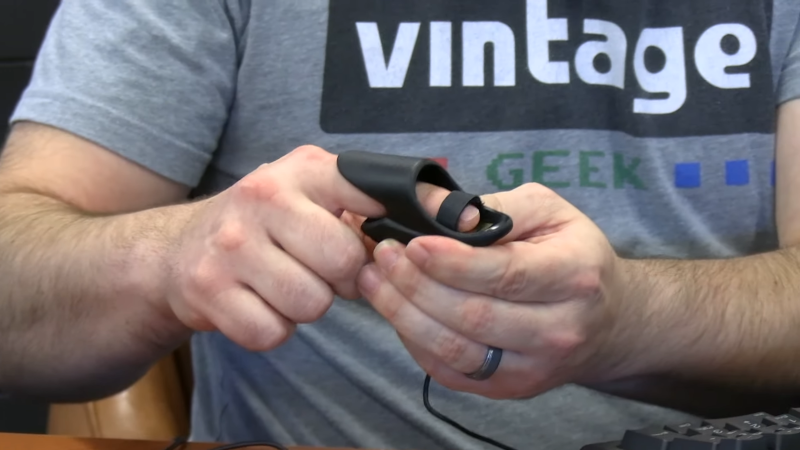[Vintage Geek] found an interesting device from 1996 called “MindDrive” which claims you can control your computer with your brain. Oddly, though, it doesn’t connect to your head. Instead, it has a little finger sensor that looks like a pulse-ox sensor. Did it work? The video below will show you what it can and can’t do.
The company claims the device is the result of seven years of research. We suspect it is little more than a galvanometer, like a kid’s toy lie detector. There is a gold sensor and a Velcro strap. It is hard to imagine that it was feasible that “thinking left” would cause a change in your finger that the device can interpret.
The device came with software including things like “MindSkier” which is a scrolling ski game. [Vintage Geek] suspected it wouldn’t matter if he had the sensor on or not, but the software was smart enough to realize the sensor had no input. However, it was impossible to differentiate between random movement and just errors in “thought control.” The pinball game had the same issue. But it seems certain the games are just doing random actions.
The device received some press in its day, probably because one of the company’s partners, according to reports, was Walt Disney-owned Miramax studio. Miramax claimed that by 1997, they’d release short films controlled by your thoughts. Hmmm… The New York Times reported in 1996 that they didn’t believe the $140 device either. They compared it to a Magic 8 ball. They sidestepped the finger sensor with a grape and a wadded-up moist paper towel. Both of them were also able to “control” the device. Who knew?
A headband would have been more convincing. Sensing nerve impulses is possible, too, but hardly the same thing.

















They just needed better software.
https://thoughttechnology.com/all-categories/software/
I´ve alway controlled my computer with my brain. Getting input from peripherals my eyeballs, and using my brain to control actuators (mostly fingers).
Pshah. I control computer using other people’s brains! And I get fatly paid for that. Now get back to work instead of posting here… I know who you are!
– your friendly manager
There’s a low-tech toy that this reminds me of – a stick with a weight hanging from a thread in the middle. For many people, if you hold the stick between your palms by its ends, it takes very little power of suggestion to get you to make non-noticeable movements that cause the weight to swing around in whichever direction you visualize it swinging. Maybe something like this could be done for a game with very simple controls, if the person playing was so suggestible and the sensor was actually good enough.
I remember playing with this device in a Frye’s once. It was on display and connected to the skiing game. Pretty sure it was some form of biofeedback — I do remember being able to think the direction and the skier would respond, but I imagine it was picking up slight movements from my finger.